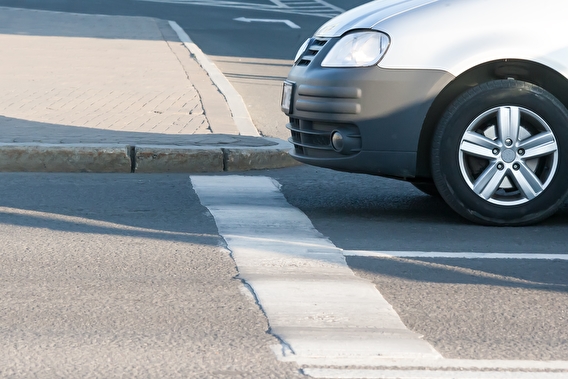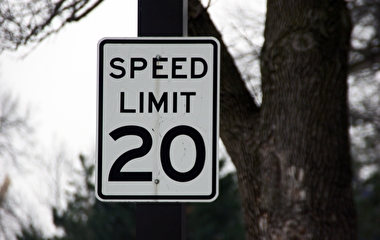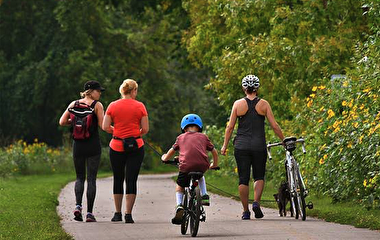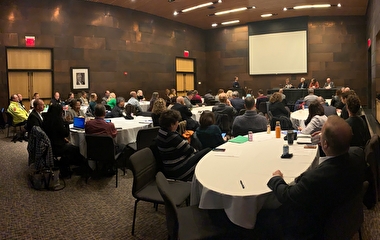
Adding stop lines at two-way stop-controlled intersections doesn’t directly correlate to improved safety, according to U of M researchers. Stop lines are frequently used along with regulatory stop signs to indicate where drivers must stop before they enter the conflicting traffic lane, but very little research had been conducted on this pavement marking’s effect.
“The benefits of stop lines had been assumed, not proven,” says John Hourdos, director of the U’s Minnesota Traffic Observatory. “And while one stop line is not an expensive addition, maintaining them at hundreds of intersections can become a sizable expense for local agencies.”
Researchers took a two-pronged approach in this study to determine what effects stop lines have on crashes, whether stop lines have an effect on overall driver behavior, and if stop lines affect where drivers stop.
“In an era where local public agencies aim to maximize the value of their limited budgets, we wanted to give local agency traffic engineers definitive data that would allow them to make informed and cost-effective decisions regarding stop line installation and maintenance,” Hourdos says.
The researchers began with a safety study using a large data sample of historical crash records from five Twin Cities metro cities. They applied models relating expected crash frequency to relevant site characteristics, including the presence of stop lines at the cities’ non-all-way stop-controlled intersections. The team closely examined detailed features of each intersection by year, including stop signs and lines, speed limits, sight distances, and crash locations.
The second part of the research project was an observational before-and-after field study at 23 stop-controlled intersections without stop lines in several cities. Researchers installed video cameras at each intersection, recorded normal traffic for two weeks, and then installed stop lines. After a two-week period to allow driver familiarity, researchers resumed collecting video of drivers’ responses to the new stop lines for another two weeks.
The safety study’s key finding was that the presence of a stop line showed no association with crash occurrence when used as the sole predictor. “When controlled for the presence of a painted crosswalk, a weak positive influence from stop lines was reported,” Hourdos says. The field study showed that in all cases—both before and after stop line installations—drivers stopped 10 feet or more after the stop sign or stop line.
Additionally, researchers found that the more space there was between the line or sign and the edge of the conflicting driving lane, the more drivers ignored the stop line. After stop lines were added, some cases showed drivers stopping even closer to the conflicting lane than before.
“A positive observation was that although the presence of the line did not increase the number of drivers that come to a full stop, overall rolling stops became slower rolling stops,” Hourdos says. Researchers concluded that while the marking has some effect, most frequently it is not the predicted one—and in some cases not even the desired one.
The study provides welcome insight at local public agencies such as the City of Edina, which estimates that the annual maintenance of stop lines at each of its 700 intersections costs around $1,000, due in large part to Minnesota’s cold weather and plowing operations.
“The benefit of this study is knowing that the installation of stop lines doesn’t directly correlate to improving traffic safety,” says Nick Baler, Edina’s traffic safety coordinator. “By no longer installing and maintaining stop lines, agencies can allocate more funding elsewhere for proven safety improvements.”
The research was sponsored by the Minnesota Local Road Research Board.
Writer: Megan Tsai


